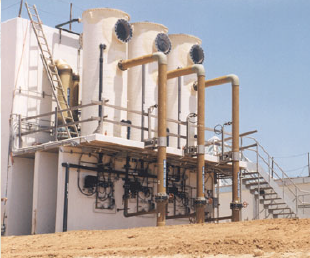Minimum Pipe Wall due to Internal Pressure

Description
Calculates the minimum required walll thickness for pipe due to internal pressure in accordance with ASME B31.3, ASME B31.8 and CSA Z662.
Calculation Reference
ASME B31.3
Process Piping
CSA Z662
To calculate the minimum required wall thickness for a pipe due to internal pressure, you can use the Barlow's formula, which is commonly used in accordance with various piping codes, including ASME B31.3 (Process Piping), ASME B31.8 (Gas Transmission and Distribution Piping Systems), and CSA Z662 (Oil and Gas Pipeline Systems).
The Barlow's formula is given by:
t = (P * D) / (2 * S + P * Y)
where:
- t is the minimum required wall thickness (mm or in)
- P is the internal design pressure (MPa or psi)
- D is the outside diameter of the pipe (mm or in)
- S is the allowable stress for the pipe material at the design temperature (MPa or psi)
- Y is the longitudinal joint factor (dimensionless), typically equal to 1 for seamless pipes, 0.8 for electric resistance welded (ERW) pipes, and 0.6 for furnace butt welded (FBW) pipes
To calculate the minimum required wall thickness (t) using the Barlow's formula, follow these steps:
-
Determine the internal design pressure (P) based on the system's operating pressure and any applicable safety factors or pressure allowances.
-
Measure or obtain the outside diameter (D) of the pipe.
-
Determine the allowable stress (S) for the pipe material at the design temperature, which can be found in the relevant piping code (e.g., ASME B31.3, ASME B31.8, or CSA Z662) or material specifications. Note that the allowable stress may need to be adjusted for factors such as temperature, pressure, and corrosion allowances.
-
Determine the longitudinal joint factor (Y) based on the pipe's manufacturing process, as specified in the applicable piping code.
-
Plug the values for P, D, S, and Y into the Barlow's formula and calculate the minimum required wall thickness (t).
Keep in mind that the calculated minimum wall thickness may need to be increased for factors not considered in the Barlow's formula, such as corrosion, erosion, or mechanical loads. Additionally, pipe thicknesses are typically available in standard sizes, so the actual pipe thickness used should be equal to or greater than the calculated minimum wall thickness.
Calculation Preview
Full download access to any calculation is available to users with a paid or awarded subscription (XLC Pro).
Subscriptions are free to contributors to the site, alternatively they can be purchased.
Click here for information on subscriptions.


